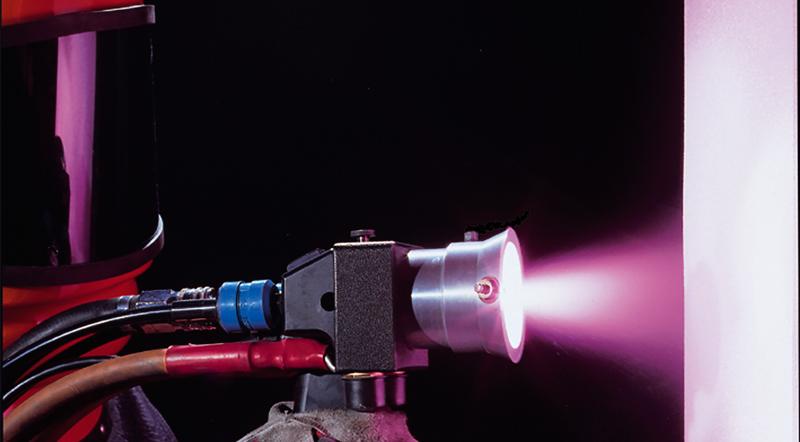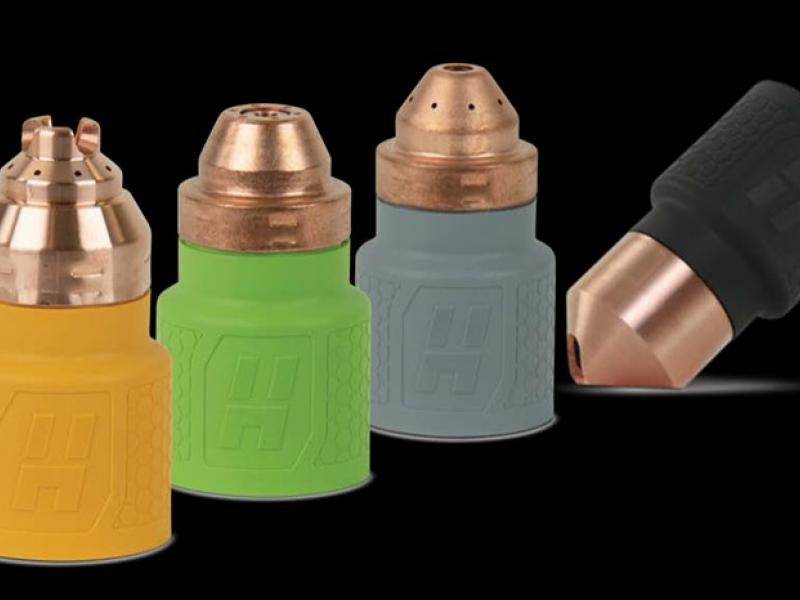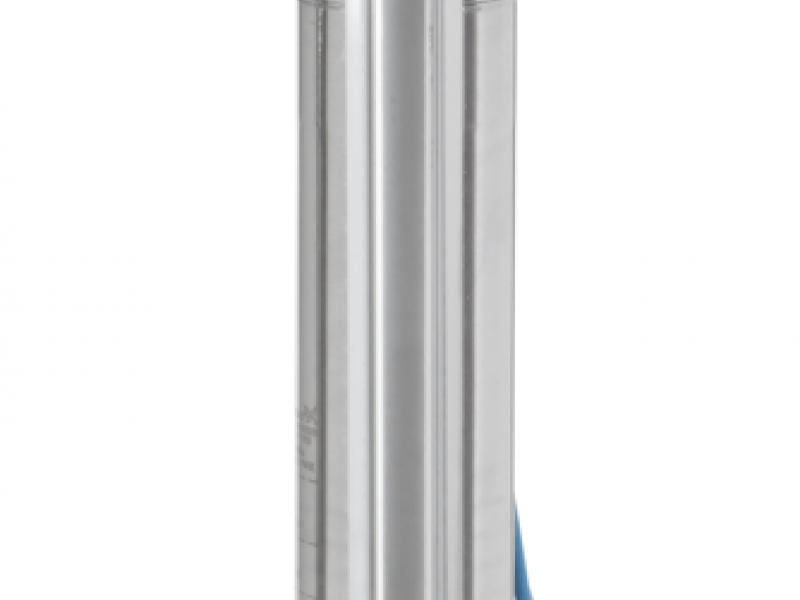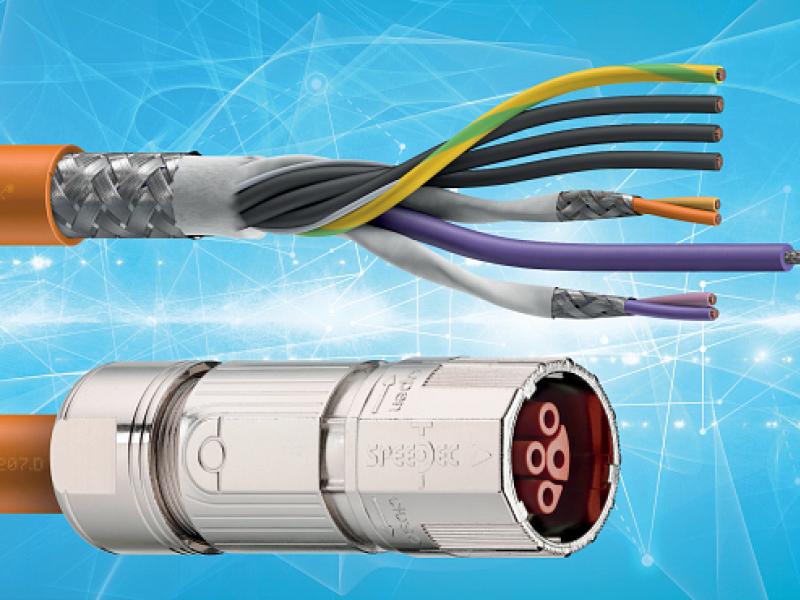Thermal spraying, also commonly known as metal spraying, is a coating process where a wide range of metals or ceramics can be sprayed onto the surface of another material. There are untold uses for this - here are 10 applications for starters.
1.Wind Turbines
Atmospheric corrosion causes damage to wind turbines. It’s for this reason many manufacturers specify thermal sprayed zinc or zinc/aluminium alloys as a method of corrosion protection. Thermal sprayed coatings – using the arc spray process – give a resilient finish, which is less susceptible to damage than many paint coatings.
2. Oil Industry
Pipes, Risers and Structures Oil industry pipes, risers and structures are often exposed to harsh elements and oil and gas platform structures benefit from the application of thermal sprayed aluminium (TSA). This is done using the arc or flame spray process, where the molten material is atomised by a cone of compressed air and propelled towards the pipes. This spray solidifies when it hits the surface to form a dense coating, which protects against corrosion for in excess of 20 years in the harshest of environments.
3. Bridges
There’s usually heavy footfall or traffic over bridges so metal spraying them is ideal, as not only does it protect from corrosion – it also helps extend a bridge’s life. The flame spray process, where the wire is fed by a driven roller system through the centre of an oxygen-fuel gas flame and is melted, is ideal for protecting bridges. Metal spraying is proven to be the best protection from corrosion and can provide protection for up to 20 years to first maintenance.
4. Petrochemical Plants
In the petro-chemical industry, Corrosion Under Insulation (CUI) – where accelerated corrosion can occur under wet insulation – consumes a significant percentage of maintenance budgets. By protecting against CUI, companies can move towards inspection-free and maintenance-free piping systems and significantly reduce maintenance costs. Metal spraying is the ideal solution for the protection of refinery and process plant vessels, tanks and steel fabrications, as it’s proven to be a very robust coating solution for protecting against CUI.
5. Structural Steelwork
The Burj Al Arab hotel in Dubai is one of the most famous steel structures that’s been metal sprayed. In total, 10,000m2 of steelwork was arc sprayed, including the helideck framework, roof mounted mast and six diagonal support braces. The aluminium coating should protect the Burj Al Arab from corrosion for around 15 to 20 years, even in the harsh, coastal environment in which it’s situated.
6. Seam Spraying of ERW Tubes
Tubes are produced on a tube forming mill by Electrical Resistance Welding (ERW) the longitudinal seam. During the welding process, the heat generated destroys the external coating around the weld area. Unless the ERW seam is protected, this area will corrode. The ideal way to protect it is to metal spray the seam with a material that has similar corrosion resistant properties. This corrosion resistant tube has numerous uses, including domestic and garden furniture, car seat frames, parking barriers, balustrades and even car exhaust pipes.
7. LPG Cylinders
Metal spraying is used to protect LPG, propane gas or butane gas bottles against corrosion. Gas cylinders are often refurbished and, as part of that process, the surface of the bottles is grit blasted to prepare it prior to spraying with zinc. LPG cylinders are usually metal sprayed using the arc spray process.
8. Architectural Coatings
There are many creative architectural coating solutions for things like balcony parts, such as support columns, balcony decks and curved railings, and decorative window and doorframes. If used externally, they will be subjected to the corrosive effects of the weather so need to be protected. Metal spraying is ideal for this, as being a cold process there is no risk of distortion or fettling, unlike with hot dip galvanising. There’s also the opportunity to use different coatings, such as bronze or copper, to fit with the overall design scheme.
9. Metal Spraying Versus Galvanising
Metal spraying has many advantages for lots of industries, as well as being a great alternative to hot dip galvanising, which can cause distortion to the structures being dipped. Galvanising is a hot process whereas metal spraying is a cold process. The advantages of metal spraying include: no distortion due to heat, allowing sealed hollow fabrications to be treated without the risk of explosion; no size limit; carried out on site; when equipment’s not being used it can be switched off – saving money.
10. Film Industry Sets and Artistic Coatings
Polystyrene props are popular on film industry stage sets, as they’re easy to manage. To make them more robust, the polystyrene is metal sprayed with zinc and steel. This makes the props stronger and less prone to dents when being moved around the set and reduces artwork time. Metal spraying is ideal for using on polystyrene, as the molten particles created during the Arc spray process only hold a small amount of heat energy. This heat dissipates very quickly when it comes into contact with the large surface of the polystyrene.






